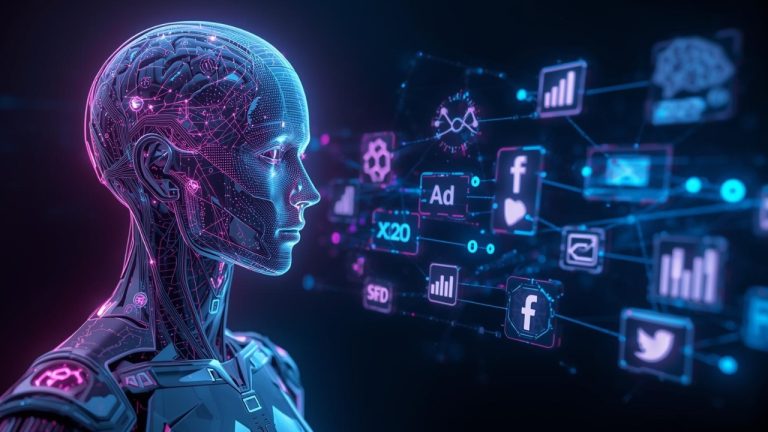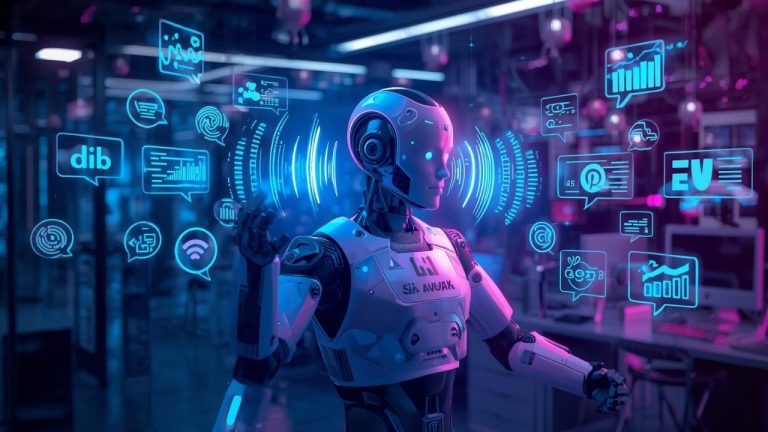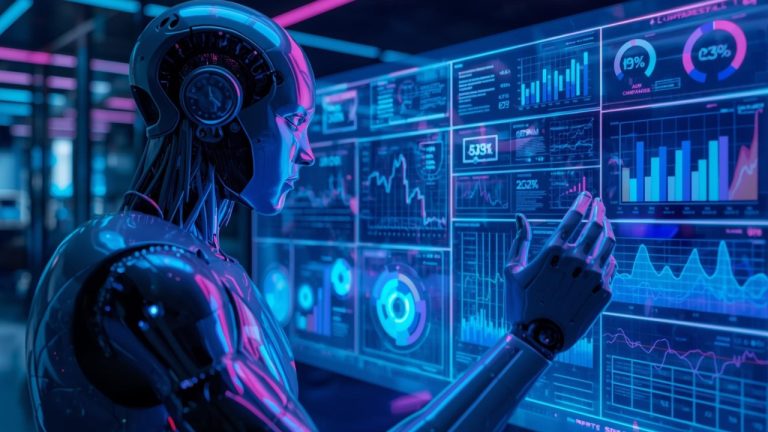
In the competitive digital landscape, landing pages are critical tools for converting visitors into leads, customers, or subscribers. A well-optimized landing page can significantly increase conversion rates, improve ROI, and enhance the overall user experience. Traditional landing page design often relies on manual A/B testing, static content, and intuition-driven decisions, which can be time-consuming and limited in effectiveness.
Artificial Intelligence (AI) has revolutionized landing page optimization by enabling real-time personalization, predictive analytics, and automated content testing. AI-powered landing pages can dynamically adapt to visitor behavior, preferences, and intent, making it easier to guide users toward desired actions. This article explores how to build AI-powered landing pages that convert, the technologies behind them, practical strategies, and best practices for success.
- Understanding AI-Powered Landing Pages
An AI-powered landing page is a web page that leverages AI technologies to analyze visitor behavior, optimize content dynamically, and provide personalized experiences. Unlike traditional landing pages, which are often static and generic, AI-powered pages:
- Adjust content based on visitor data in real time
- Predict user intent and guide navigation
- Automate testing of design elements, CTAs, and layouts
- Provide actionable insights to marketers for continuous improvement
The primary goal of AI-powered landing pages is to increase conversion rates by making every visitor interaction relevant, engaging, and frictionless.
- Why AI Improves Landing Page Conversions
Traditional landing page optimization has several limitations:
- Manual A/B testing can take weeks or months to produce results
- Generic content may fail to engage diverse visitor segments
- Human intuition is prone to error and bias
- Scaling personalized experiences across thousands of visitors is challenging
AI overcomes these limitations by analyzing large datasets in real time, learning from visitor interactions, and automatically adjusting page elements to maximize conversions.
Benefits of AI for landing page optimization include:
- Personalization at scale: Tailor content for different visitor segments automatically
- Predictive analytics: Forecast which content or offers are most likely to convert
- Dynamic optimization: Test and update page elements continuously without human intervention
- Data-driven insights: Identify friction points, user intent, and areas for improvement
- Key Technologies Behind AI-Powered Landing Pages
AI-powered landing pages rely on several advanced technologies:
- Machine Learning
Machine learning algorithms analyze user behavior, historical data, and engagement patterns to predict what content, layout, or CTA will drive conversions.
- Natural Language Processing (NLP)
NLP helps AI understand visitor queries, search intent, and interactions, allowing for contextual content recommendations.
- Predictive Analytics
Predictive models forecast visitor behavior, enabling AI-powered landing pages to serve the right message at the right time.
- Behavioral Analytics
Tracking user engagement, scroll depth, clicks, and hover patterns helps identify high-performing and low-performing elements on a page.
- Dynamic Content Engines
These engines automatically adjust headlines, images, forms, and CTAs based on visitor preferences, demographics, or behavior.
- Steps to Build AI-Powered Landing Pages
Creating a high-converting AI-powered landing page involves a systematic approach:
Step 1: Define Conversion Goals
Start by identifying the primary goal of the landing page. Examples include:
- Capturing leads through a form
- Encouraging product purchases
- Driving newsletter subscriptions
- Promoting event registrations
Clear goals guide the AI system in optimizing page elements and user interactions.
Step 2: Collect and Analyze Visitor Data
AI needs data to personalize experiences effectively. Gather data from:
- Previous visitor behavior on your site
- Traffic sources and referral channels
- Demographics, location, and device type
- Interaction patterns with content, forms, and CTAs
This data forms the foundation for AI-driven personalization and optimization.
Step 3: Design a Flexible Page Layout
Design your landing page with modular sections that AI can modify dynamically. Consider:
- Multiple headline and subheadline variations
- CTA buttons in different colors, sizes, and placements
- Image and video options tailored to different audiences
- Form variations for lead capture based on visitor intent
A flexible layout allows AI to experiment with combinations and implement the highest-performing version.
Step 4: Implement AI-Powered Personalization
Use AI tools to deliver personalized experiences for visitors based on their behavior, intent, and demographics. Examples include:
- Showing product recommendations based on browsing history
- Adjusting messaging for first-time vs. returning visitors
- Offering localized content for visitors from different regions
- Displaying personalized offers or discounts in real time
Personalization increases relevance, engagement, and the likelihood of conversion.
Step 5: Utilize Dynamic A/B Testing
Traditional A/B testing is limited to a few variations and slow results. AI-powered landing pages can:
- Continuously test multiple versions of headlines, CTAs, and images
- Measure engagement and conversion in real time
- Automatically deploy the best-performing variations
This continuous optimization ensures your landing page evolves with visitor behavior and preferences.
Step 6: Incorporate Chatbots and Conversational AI
Integrate AI chatbots to guide visitors, answer questions, and collect lead information. Chatbots increase engagement by:
- Offering instant assistance
- Providing personalized recommendations
- Reducing friction in the decision-making process
Conversational AI makes landing pages more interactive and user-friendly.
Step 7: Monitor, Analyze, and Refine
Use analytics dashboards to track AI-driven improvements and identify new opportunities for optimization. Key metrics to monitor include:
- Conversion rate
- Time on page
- Scroll depth
- CTA clicks
- Bounce rate
Refine AI models regularly to ensure they adapt to changing visitor behavior and market trends.
- Best Practices for AI-Powered Landing Pages
To maximize conversions, follow these best practices:
- Keep User Experience Central
While AI can optimize content dynamically, focus on clear messaging, intuitive navigation, and responsive design. A confusing layout can negate the benefits of AI personalization.
- Use Clear and Compelling CTAs
AI can optimize placement and wording, but your calls-to-action should remain direct, relevant, and action-oriented.
- Leverage Social Proof
Integrate customer testimonials, reviews, or case studies. AI can highlight the most relevant social proof for each visitor segment.
- Optimize Page Load Speed
AI-driven personalization is only effective if pages load quickly. Optimize images, scripts, and server performance to prevent visitor drop-off.
- Segment Your Audience
AI performs best when it can differentiate visitor types. Segment audiences based on intent, behavior, location, or demographics for targeted personalization.
- Maintain Transparency and Privacy
Be transparent about data usage and comply with regulations like GDPR and CCPA. Visitors are more likely to engage when they trust your site.
- Common Mistakes to Avoid
Even with AI, landing page optimization can go wrong if these mistakes occur:
- Overpersonalization: Too many dynamic changes can confuse visitors
- Ignoring mobile optimization: AI won’t compensate for poor mobile UX
- Neglecting analytics: Failing to track results can prevent meaningful insights
- Overloading with content: AI can optimize, but cluttered pages still reduce conversions
Avoiding these pitfalls ensures AI-driven personalization works effectively.
- Practical Applications of AI-Powered Landing Pages
AI-powered landing pages can transform various industries:
- E-commerce: Personalized product recommendations, dynamic discount offers, and automated cart recovery prompts
- SaaS: Dynamic feature highlights based on user profile, interactive demos, and lead qualification
- B2B: Personalized whitepapers, case studies, and consultation scheduling
- Event Marketing: Targeted registration prompts, content recommendations, and session reminders
The versatility of AI allows for customized strategies across different verticals, all aimed at improving conversion rates.
- The Future of AI in Landing Page Optimization
The future of AI-powered landing pages is hyper-personalized, predictive, and multi-channel:
- Hyper-Personalization: Pages will adapt to individual visitors across devices and sessions
- Predictive Conversion Modeling: AI will anticipate visitor intent and serve preemptive offers
- Integration with Voice and Visual AI: Landing pages may respond to voice commands or adapt visuals dynamically
- Seamless Cross-Channel Experience: AI will optimize not just web pages but emails, ads, and social media landing experiences in sync
Businesses that embrace AI in landing page strategy will gain a competitive advantage by converting visitors more effectively and efficiently.
- Conclusion
Landing pages are the cornerstone of digital marketing conversion strategies, but traditional static pages are no longer enough to meet modern user expectations. AI-powered landing pages take personalization, optimization, and user engagement to the next level, enabling businesses to understand visitor intent, deliver tailored experiences, and continuously optimize for higher conversions.
By building AI-powered landing pages, businesses can:
- Personalize content dynamically for different visitor segments
- Optimize headlines, CTAs, and layouts continuously
- Use AI chatbots to guide visitors and answer questions
- Predict visitor behavior and adapt content proactively
- Monitor performance and iterate for sustained results
AI transforms landing pages from static entry points into intelligent, interactive conversion machines. Implementing AI-driven strategies ensures every visitor interaction is meaningful, engaging, and conversion-focused.
The future of landing pages is data-driven, personalized, and adaptive, and businesses that leverage AI effectively will maximize their conversions, ROI, and overall digital performance.







